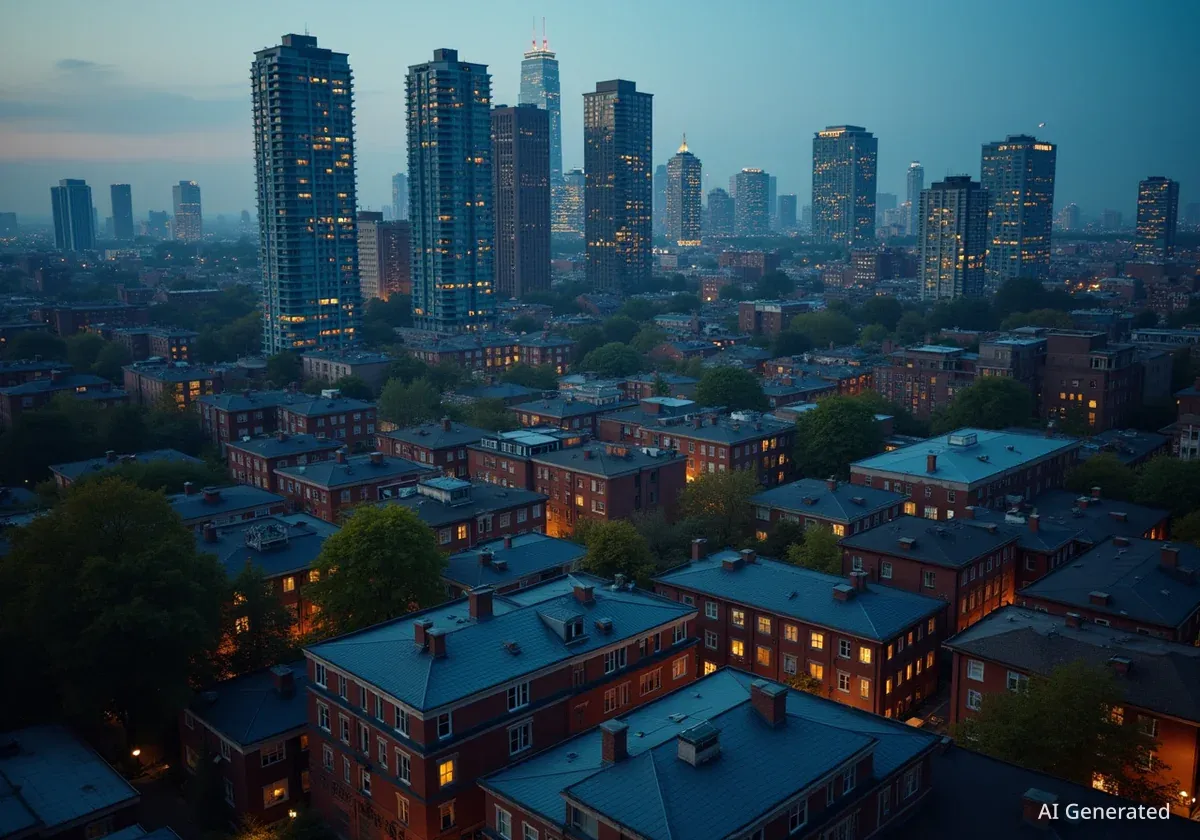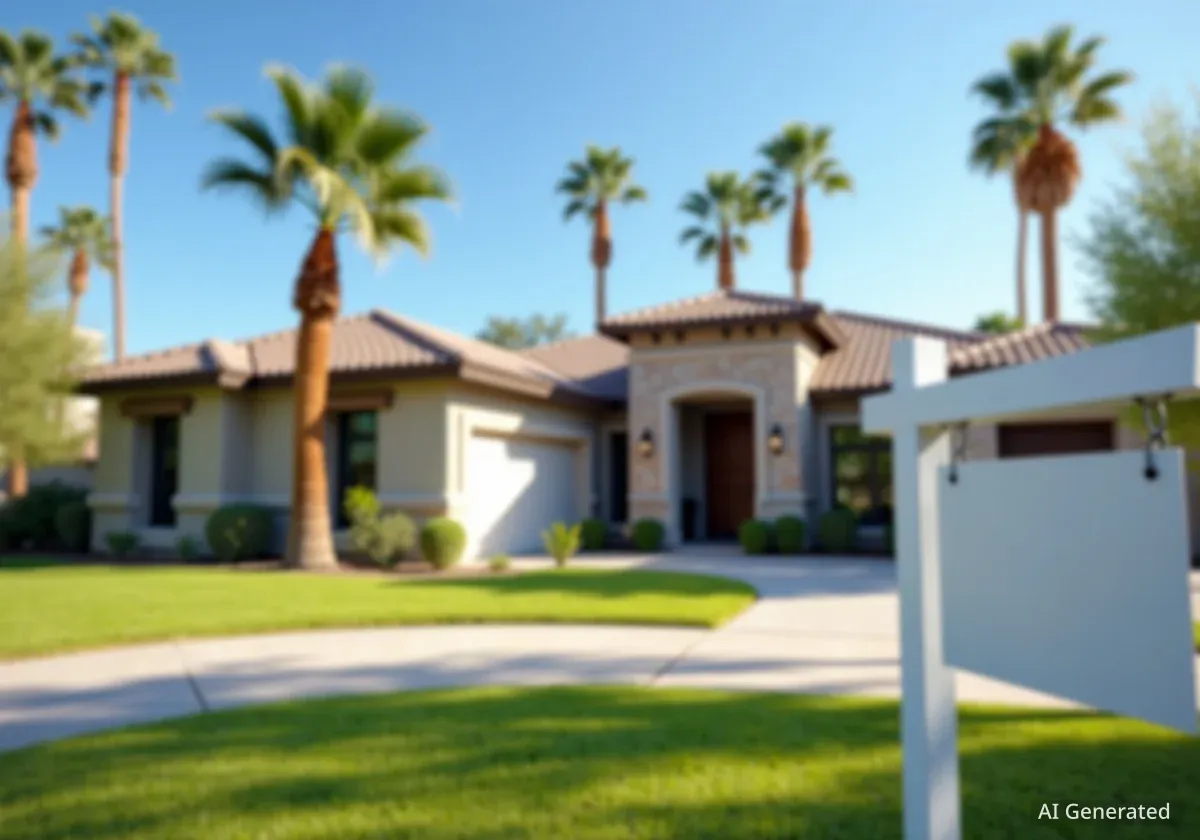A monumental transfer of wealth, estimated to be between $84 trillion and $124 trillion, is set to move from the baby boomer generation to millennials over the next two decades. A significant portion of this wealth is tied up in real estate, positioning millennials to become the nation's wealthiest generation and fundamentally reshape American cities.
Key Takeaways
- An unprecedented wealth transfer of up to $124 trillion from baby boomers to younger generations is currently underway.
- Real estate, including residential homes, commercial properties, and land, constitutes a major part of these inherited assets.
- Millennial preferences for walkability, sustainability, and community-focused living are expected to drive future urban development.
- Reports indicate 85% of millennials are willing to pay a premium for homes in walkable neighborhoods, signaling a shift from car-dependent suburbs.
- Urban planners and city officials face pressure to update zoning laws and policies to align with the values of this emerging class of property owners.
The Scale of the Great Wealth Transfer
The United States is on the cusp of the largest intergenerational wealth transfer in its history. Over the next 20 years, baby boomers are projected to pass down assets valued at a minimum of $84 trillion. Some economic models place the upper estimate as high as $124 trillion.
This financial shift will not only transfer money but also immense control over physical assets. Real estate is a cornerstone of this transfer, encompassing everything from suburban single-family homes to urban commercial buildings and undeveloped land.
As millennials inherit these properties, they will gain significant influence over the future of urban and suburban landscapes. This generation's distinct values and lifestyle priorities are poised to trigger a period of profound transformation in real estate development and city planning.
By the Numbers
The estimated $84 trillion to $124 trillion transfer represents a historic consolidation of economic power into the hands of a new generation, with real estate assets at its core.
A New Vision for Urban Living
Unlike their parents' generation, which largely fueled the growth of sprawling, car-centric suburbs, millennials have demonstrated a strong preference for different living arrangements. Their priorities consistently revolve around purpose, community, and environmental sustainability.
Walkability is a key factor influencing their real estate decisions. According to recent studies, an overwhelming 85% of millennials are willing to pay more for a home located in a walkable community where daily needs can be met without a car. This indicates a strong market demand for neighborhoods that integrate residential, commercial, and recreational spaces.
This preference extends beyond convenience. It reflects a desire for more connected, community-driven lifestyles and a reduced carbon footprint, signaling a potential move away from the isolated suburban model that defined much of the late 20th century.
The Rise of Mixed-Use Development
The millennial approach to property ownership is expected to favor mixed-use projects. These developments combine housing, offices, retail, and public amenities in a single, dense area. This model directly supports their desire for walkable, vibrant neighborhoods.
As millennials inherit commercial properties or developable land, they are more likely to pursue projects that blend profit with a sense of purpose. This could mean redeveloping underutilized strip malls into community hubs or converting single-use office buildings into multi-functional spaces with apartments and ground-floor retail.
A Generational Divide in Priorities
The baby boomer generation often prioritized large homes, private yards, and automobile access, leading to the expansion of suburban America. In contrast, millennials tend to value access over acreage, seeking proximity to work, social activities, and public transit. This fundamental difference in values is the primary driver of the expected urban transformation.
Implications for the Real Estate Market
The transfer of trillions in property assets will have far-reaching effects on the real estate market. The sheer volume of homes, commercial spaces, and land changing hands will create new opportunities and challenges for developers, investors, and local governments.
Many inherited suburban homes may not align with millennial preferences. This could lead to a wave of sales, with proceeds being reinvested in urban or dense suburban-core properties. Alternatively, it could spur innovation in suburban retrofitting, where older neighborhoods are redesigned to incorporate more mixed-use elements and walkable infrastructure.
"The real estate decisions made by this next generation of landowners will redefine local economies and the very fabric of our cities. It's a shift from a purely profit-driven model to one that integrates community benefit and sustainability."
Inherited commercial properties also face a potential reimagining. An old warehouse might be seen not just as a storage facility but as a potential site for loft apartments, an artists' collective, or a vertical farm. This creative and purpose-driven approach to asset management will likely become more common.
How Cities Can Prepare for the Shift
For municipal governments and urban planners, this generational transition is a critical moment. Cities that proactively adapt to the preferences of future landowners will be better positioned to attract investment, talent, and economic growth. Those that fail to adjust risk stagnation.
Experts suggest several key actions for city leaders:
- Modernize Zoning Codes: Many cities operate with outdated zoning laws that segregate residential, commercial, and industrial areas. Reforming these codes to permit and encourage mixed-use development is a crucial first step.
- Engage Future Landowners: Municipalities should create channels to communicate with and understand the priorities of the millennial generation. This includes involving them in community planning and development processes.
- Invest in Infrastructure: To support walkable communities, cities need to invest in public transit, bike lanes, pedestrian-friendly streetscapes, and green spaces.
- Align Policies with New Values: Policies related to sustainability, affordable housing, and community development should be updated to reflect the values of a generation that seeks to balance financial returns with social and environmental impact.
The great wealth transfer is more than a financial event; it is a catalyst for urban evolution. By understanding the forces at play, cities can partner with a new generation of property owners to build more sustainable, equitable, and vibrant communities for the future.





